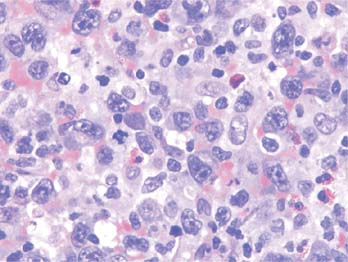Introduction
The immune system, composed of a multitude of interdependent humoral and cellular components, as well as non-specific host defense mechanisms (e.g., phagocytes), defends the body against environmental pathogens. Deficiencies in any part of this system expose the host to a greater risk for opportunistic infections and neoplasms. Opportunistic infections differ substantially from the common infections that occur in the general population; their incidence is higher, they are especially severe, and they can exhibit unusual clinical features. A relationship between immune deficiency and neoplasms has long been suspected, based on available clinical and experimental observations. Human neoplasms, particularly of the lymphoid system, are most prevalent in very old and very young persons, who are in the two periods of life when immunocompetence is weakest. Like opportunistic infections, neoplasms that arise in immunodeficient persons can be thought of as opportunistic tumors.
 |
There are two major categories of immunodeficiency, primary and secondary. The primary group is defined by developmental deficits of various elements of the immune system; therefore, they are generally congenital and occur predominantly in children. The secondary group, also known as acquired immune deficiencies, include those induced by immunosuppressant therapy, particularly in organ transplant recipients, and those caused by infection with human immunodeficiency virus (HIV). Cancer registries, started in the early 1970s for tumors in persons with immunodeficiency, document relatively high frequencies for certain types of neoplasms that are far greater than those for age-matched segments of the general population.
Stay updated, free articles. Join our Telegram channel

Full access? Get Clinical Tree


